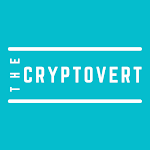Over the past several years, non-fungible tokens (NFTs) have risen to the top of the cryptocurrency market, with billions of dollars worth of trading volume and a flurry of celebrity endorsements propelling the digital art to the forefront of mainstream media sources.
You may mint (the act of making or manufacturing something) and submit your artwork to the blockchain by creating NFTs directly on NFT platforms. This tutorial will walk you through every step of creating your own NFT, from uploading your artwork to picking the best blockchain and listing it for sale.
KEY LESSONS
NFTs are distinct digital assets kept on the blockchain.
Users may upload digital content and sell it on an NFT marketplace by creating an NFT.
NFT creation is supported by a number of blockchains, with Ethereum being the most well-known.
What Is an NFT and How Does One Get Started?
Non-fungible tokens (NFTs) are cryptographic assets on a blockchain that can be distinguished from one another by their distinctive identifying codes and information.
Big Three EA Robot 70% off - Meta Trader 4 & Meta Trader 5
Since each NFT is distinct, they cannot be swapped for one another like cryptocurrencies can. On the other hand, cryptocurrency is fungible and may be exchanged for other currencies. Since each Bitcoin has the same value, they may be exchanged for one another.
The most common way that NFTs are expressed is through digital art, such images, animated movies, or music. They may be purchased and sold on NFT exchanges, usually in exchange for cryptocurrencies.
An NFT marketplace or cryptocurrency exchange that supports NFT minting can be used to create an NFT. To make an NFT entirely from scratch, adhere to these 6 steps:
1. Determine what you want to develop in step one.
NFTs are frequently connected to a work of digital art. This might be a picture, an audio recording (like a song), or even a brief video clip (such as an animated GIF). The objective is to produce an original piece of digital media that may be sold, just like a painting can be sold in an art gallery.
NFTs provide creators value since they are special things that they can only own in NFTs. Making an NFT from digital media that you don't own might have legal repercussions, thus it is very crucial to make sure you have the legal right to use it.
2. Select a blockchain.
Several blockchains can be used to store your NFT. It's crucial to pick the blockchain that meets your needs because it will permanently record your NFT:
Ethereum: With thousands of NFT collections, Ethereum is the most well-known NFT blockchain. The ERC-721 standard, which is used to generate Ethereum NFTs, keeps the NFT's information on the Ethereum blockchain.
i) The ERC-20 smart contract's creators created this standard, which outlines the minimal interface—including ownership information, security information, and metadata—necessary for the trading and distribution of gaming tokens.
ii) Similar to Bitcoin, this blockchain presently uses a proof-of-work (PoW) consensus mechanism but is in the process of switching to a more environmentally friendly proof-of-stake (PoS) consensus method. The majority of NFT marketplaces allow for the construction of Ethereum NFTs, however NFT transfers on on the Ethereum network might involve expensive gas costs.
Solana: Solana is the Ethereum blockchain's closest rival. Solana, a speedier, less expensive alternative to Ethereum, provides sub-$0.01 transaction costs and an expanding range of NFT-compatible applications.
The Proof of History (PoH) and Proof of Stake (PoS) consensus mechanisms are both used by Solana, which promises substantially quicker transaction times than Ethereum.
Flow: Home to the perennially well-liked NBA Top Shot NFT collection, Flow is another proof-of-stake (PoS) blockchain created for NFTs and decentralized gaming applications.
The Flow blockchain has seen a large number of sports franchises construct markets, making it a desirable location for the development of sports-related NFTs.
Other blockchains that allow NFTs include a number, each of which has a community and decentralized applications (DApps) for creators and NFT owners.
3. Create an NFT wallet.
To store your NFT after selecting a blockchain, you will need a digital wallet that works with that blockchain. Download the crypto wallet program, enter your username and password, and store your private keys and recovery phrase offline for backup reasons in order to establish a wallet.
Popular wallet programs that handle various blockchains include the following:
Several other cryptocurrencies are supported by the well-known cryptocurrency wallet Metamask, which also supports the Ethereum and Solana blockchains. It may be added as a browser extension or used as a mobile app.
ERC-721 NFT coins and Solana NFT collections are supported by the digital wallet provided by Coinbase. It may be added as a browser extension or downloaded as a mobile app.
Ledger Nano X: The Ledger Nano X supports both Ethereum and Solana NFTs, allowing you to store your NFTs in a safe hardware wallet.
The Big Three Indicator Trading Software
4 Select an NFT Platform.
There are an increasing number of NFT platforms that let you build an NFT, but the better ones also provide a full-service marketplace where you can advertise and sell NFTs. Some of the most well-liked NFT systems are listed below:
OpenSea: OpenSea is by far the most widely used NFT platform. With a trading volume of more than $20 billion since debut in 2017.
Solonart: With a sleek user interface and a straightforward application procedure for minting, Solanart, the Solana-based NFT platform, is home to some of the most well-known Solana NFT collections.
NFT creation is supported by a number of cryptocurrency exchanges, including Binance Exchange.
You may mint or generate your NFT directly on the platform, select the blockchain of your choice, and do so.
5. Produce the NFT
It's quite simple to create an NFT after you've selected a platform. Here is an illustration of how to create an NFT on OpenSea:
Connect your wallet by choosing the appropriate digital wallet from the OpenSea menu's wallet icon. You'll need to sign a verification on your wallet app for this.
Choose "Create" from the menu:
When you do this, a menu for creating NFTs appears. It includes a part for uploads and sections for NFT features, properties, and blockchain.
your media file here: The image or other piece of material that you will be selling is this. Either directly upload a media file or link to one hosted elsewhere.
Complete the blanks: You must give your NFT a name and include a description. This NFT can possibly have special features added to it, along with extra benefits like unlocking material like invitations to private discords or coupon vouchers for goods. You may also set a cap on the number that can be produced (typically just one, unless you are making a full collection).
Decide which blockchain to use: Your NFT will be stored on this blockchain, which is immutable once created.
Create the NFT: After entering the necessary information, just click "Create."
Your file will upload and the NFT will be produced when you click create. However, the NFT has not yet been placed on the market, and you may potentially update the metadata up until you place it on the market.
TALES BY NIGHTFALL (A COMPENDIUM OF NIGERIAN EROTIC STORIES)
6: Put the NFT up for auction
It's easy to list an NFT for sale, and the majority of NFT platforms let you do so without charge. When your NFT is ready and in your wallet, all you need to do is click the "sell" button on the platform of your choosing, set the listing price, and decide how long the sale will last.
You may create the listing once you've entered all the information on your sale. You will have to sign a few transactions in your digital wallet in order to accomplish this, which can include paying transaction costs on the blockchain you choose. Transactions in Solana are often relatively small—less than $1.
Despite the fact that the price of registering an NFT on the Ethereum blockchain might reach $100, depending on the network costs at
What Is the Price to Sell an NFT?
After being listed, the NFT ought to have a special URL that you may share with others. When a purchase is made, sellers must pay fees to the NFT marketplace, which generally range from 1% to 3% of the whole transaction.
However, you have the option to include a "royalty charge" when creating the NFT, which gives you a cut of the sale each time your NFT is later sold. Creators can receive between 5% and 10% of each transaction.
Can I Make an NFT for Nothing?
Yes. You can construct and list NFTs for free on the majority of NFT platforms. However, there is a transaction charge associated with selling an NFT, which can be as much as 3% of the sale.
Additionally, some NFT blockchains charge users network fees in order to mint NFTs for their blockchain.
The gas fee for Ethereum is based on a basic fee plus a tip, and the fee changes according to demand. An NFT now costs $500 to mint each transaction.
The Polygon blockchain, however, levies no fees.
Where Can I Find NFT Images?
Digital images posted to an NFT platform are known as NFT images. JPEG, PNG, and even animated GIF pictures are among the many image formats that are supported by the majority of devices. There are several ways to make these photos, but in order to create the initial NFT image, the upload format needs to be supported by the NFT platform.
NFTs are they covered by copyright?
NFT owners do not satisfy the prerequisites, hence they are not eligible for copyright protection. They don't count as original works of authorship because they merely serve to represent data on a blockchain.
====
IMAGE CULLED FROM GOOGLE SEARCH.






0 Comments